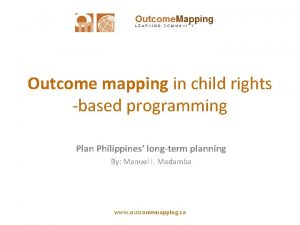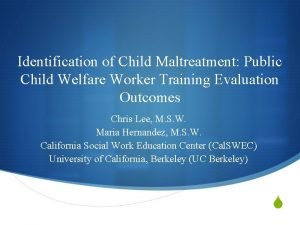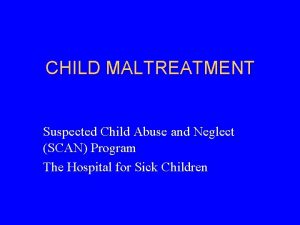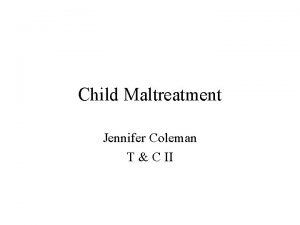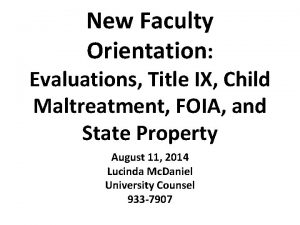Policy Research Shop Child Maltreatment in New Hampshire














- Slides: 14

Policy Research Shop Child Maltreatment in New Hampshire Assessing the Substantiation Process Sakina Abu Boakye, Irene Cofie, and Mariel Wallace Support for the Policy Research Shop is provided by the Fund for the Improvement of Postsecondary Education, U. S. Department of Education. The contents of this report were developed under grant P 116 B 100070 from the U. S. Department of Education. However, these contents do not necessarily represent the policy of the U. S. Department of Education, and you should not assume endorsement by the Federal Government.

Policy Research Shop Executive Summary • • Quantitative Analysis Qualitative Analysis: State Comparisons Qualitative Analysis: DCYF Interviews Conclusions

Policy Research Shop Quantitative Findings: NCANDS Data Analysis Support for the Policy Research Shop is provided by the Fund for the Improvement of Postsecondary Education, U. S. Department of Education.

Policy Research Shop Data and Methods • Goal: Are certain demographic characteristics in children and caregivers associated with substantiation? • Data: 2010 -2012 NCANDS data sets • Tests: chi square with a 95% confidence level

Policy Research Shop 2012 Data Findings • Significant relationships – County of Report: Merrimack, Rockingham – Report Source: Law Enforcement, Social Services – Living Situation: Non-parent relative, non-parent – Maltreatment type: physical, sexual • Risk Factors—higher rate of substantiation if 1+ risk factors present

Policy Research Shop Changes Over Time • Significant relationships – – – – – County of Report Source Living Arrangement Prior Victim Status Public Assistance Mental Retardation-Child Alcohol/Drug Abuse-Caregiver Emotionally Disturbed-Caregiver Inadequate Housing

Policy Research Shop Data Analysis Conclusions • Cases with unusual or “red flag” characteristics tend to have a higher chance of substantiation • Majority of significant relationships do not change over time • Child Protection Act amended in 2011—slight effects on substantiation

Policy Research Shop Qualitative Findings: State Comparison

Policy Research Shop State Comparison • In New Hampshire, 3 out of every 1, 000 children substantiated maltreatment. • Possible Influences: – Screening Process – Definition – Discrepancy

Policy Research Shop State Comparison • Assessment Process: – The assessment process for most states is generally similar; however, variations exist that may influence the substation rates of the respective states. – Timeframe of Assessment – Trends

Policy Research Shop Qualitative Findings: DCYF Interviews

Policy Research Shop Factors leading to a low substantiation rate • Screening process – Anonymous reports – Incomplete reports • State Definition of physical harm – High standard of proof

Policy Research Shop Proposed solutions • Screening process – Required questions for reporters – Screen out anonymous reports • State Definition of physical harm – Move from abuse to neglect grouping • Classification of cases – Founded/unfounded v. Founded/unfounded at risk

Policy Research Shop Conclusions • Cases with risk factors have higher rate of substantiation • NH definition of abuse and screening process perhaps leading to low substantiation • States with a higher number of categories, that do not address psychological harm and have a shorter investigation period have higher rates of substantiation
 Articles of confederation characteristics
Articles of confederation characteristics Leanne keene french ambassador arrives from paris
Leanne keene french ambassador arrives from paris Flow shop layout
Flow shop layout Nh scholars
Nh scholars Facsimiles ltd nashua new hampshire
Facsimiles ltd nashua new hampshire New hampshire lobbying
New hampshire lobbying Connecticut coastline length
Connecticut coastline length New hampshire department of administrative services
New hampshire department of administrative services Pratt and whitney new hampshire
Pratt and whitney new hampshire New hampshire state budget
New hampshire state budget How to write a circular letter
How to write a circular letter National child policy 1974
National child policy 1974 Opinyon tungkol sa child protection policy
Opinyon tungkol sa child protection policy One child policy
One child policy Child protection policy
Child protection policy














